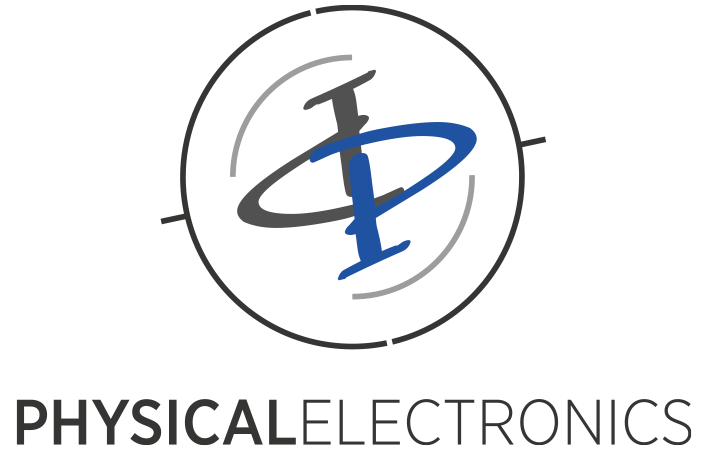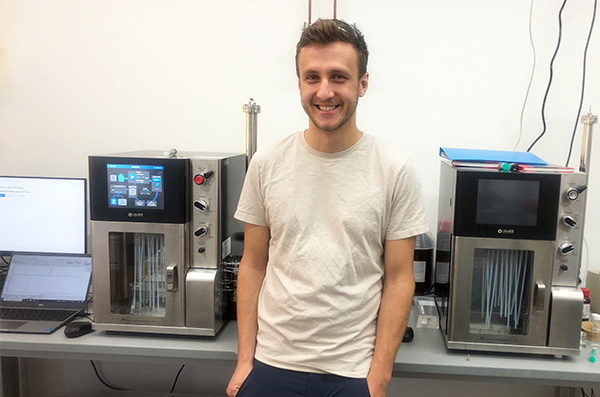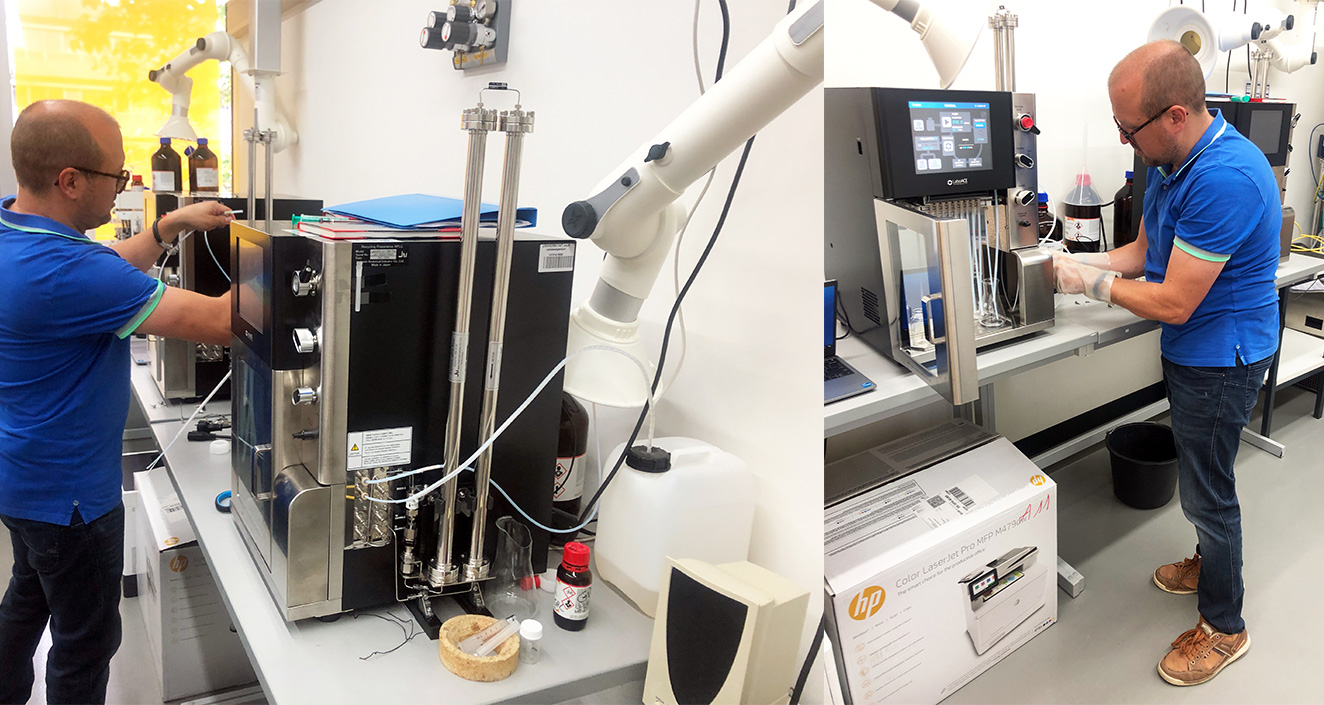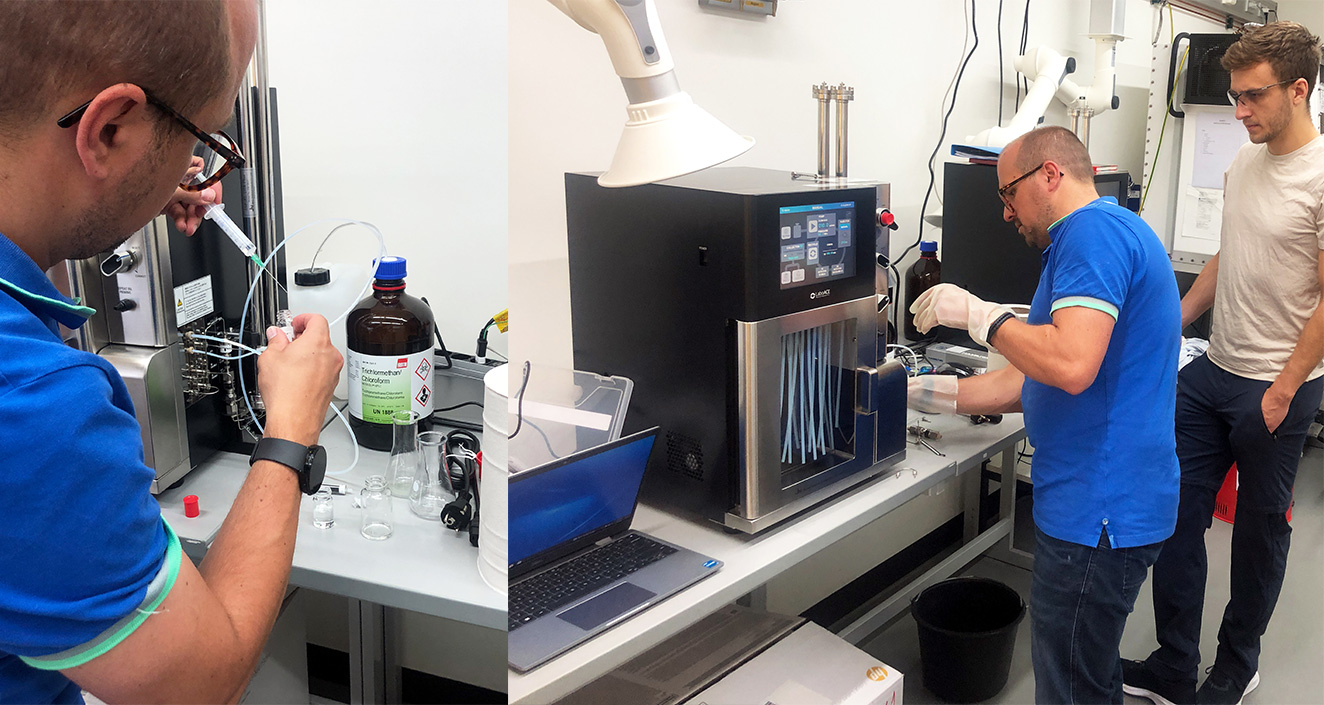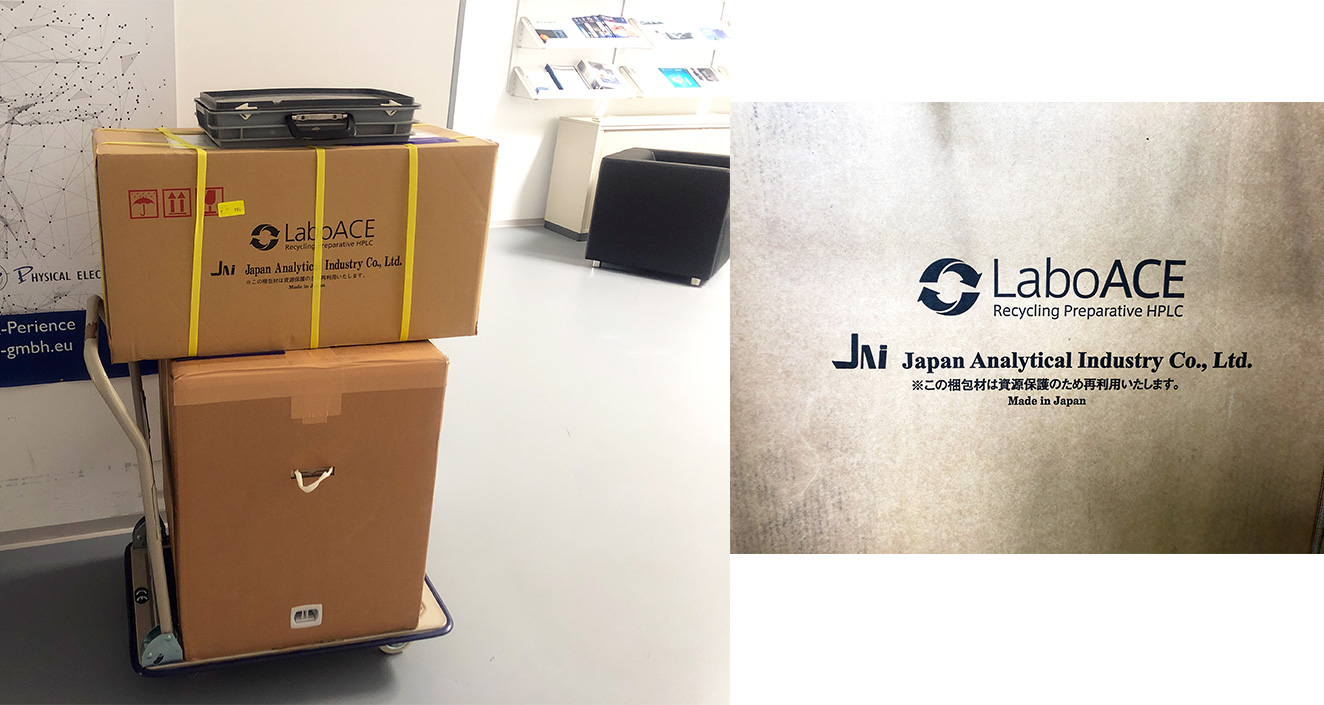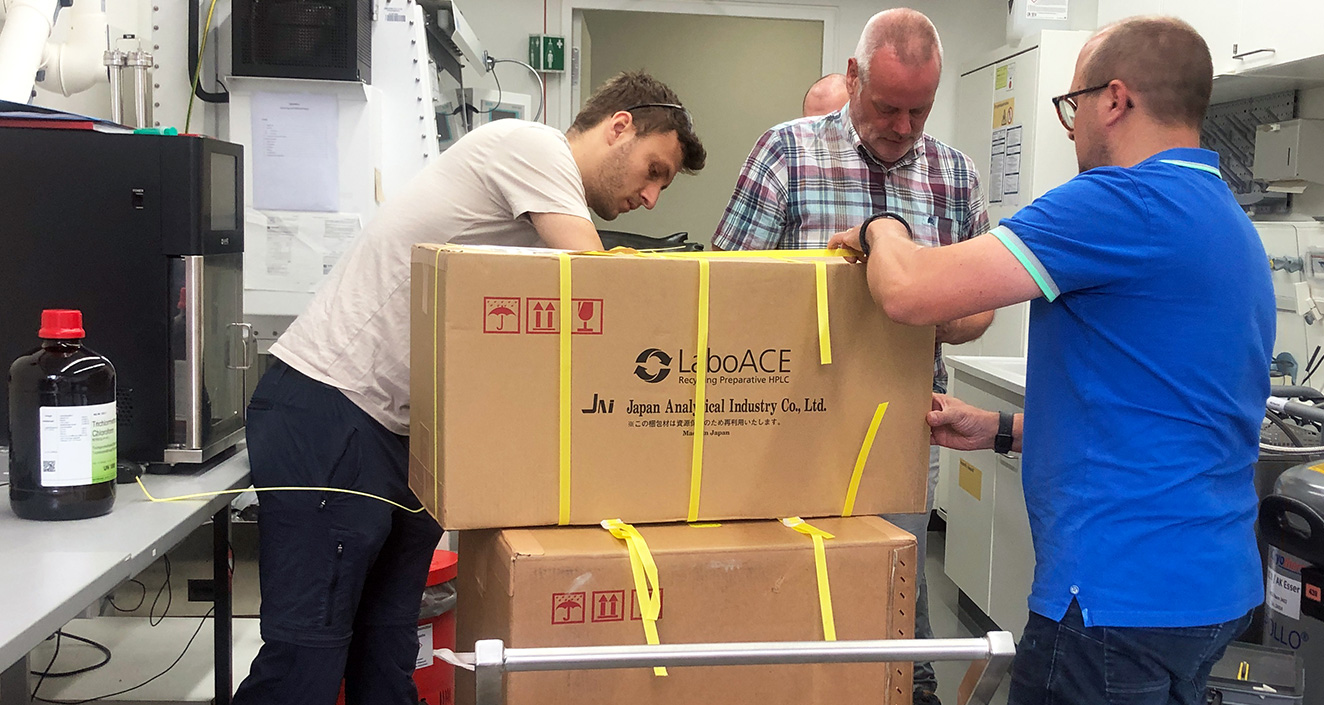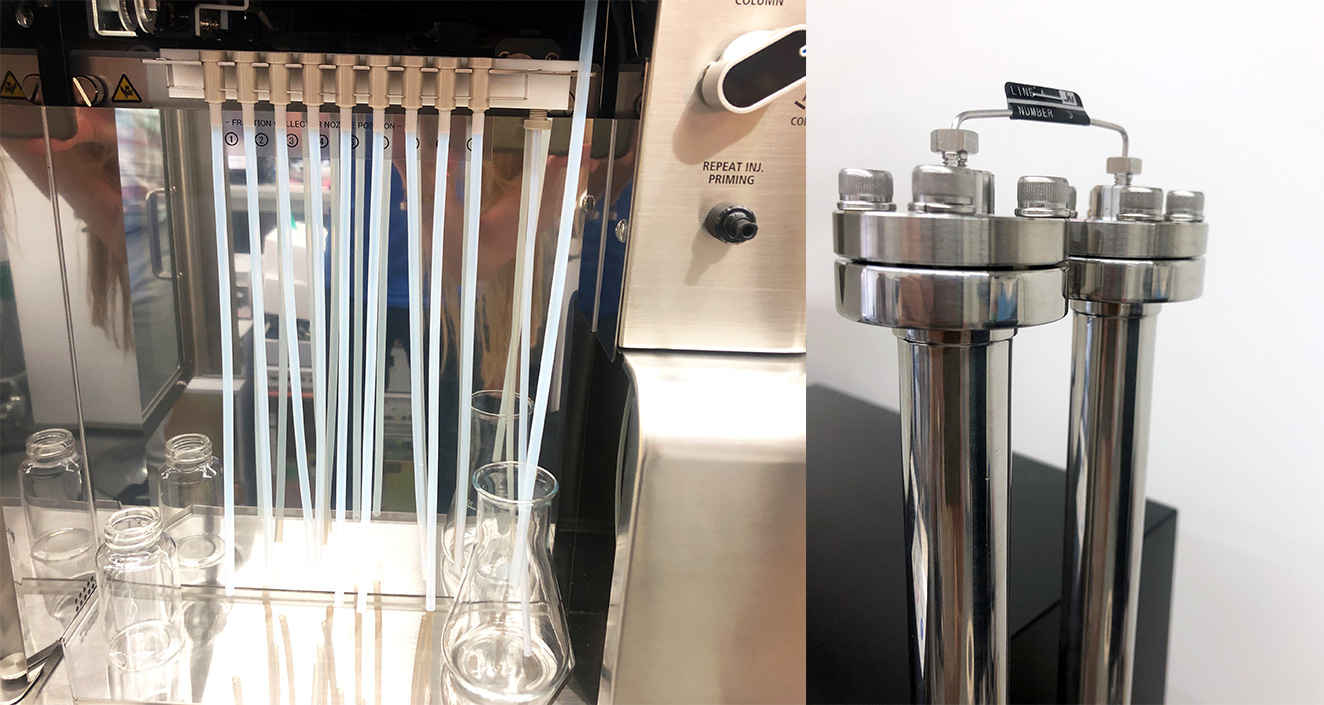Happy Customer
University of Ulm receives second GPC instrument
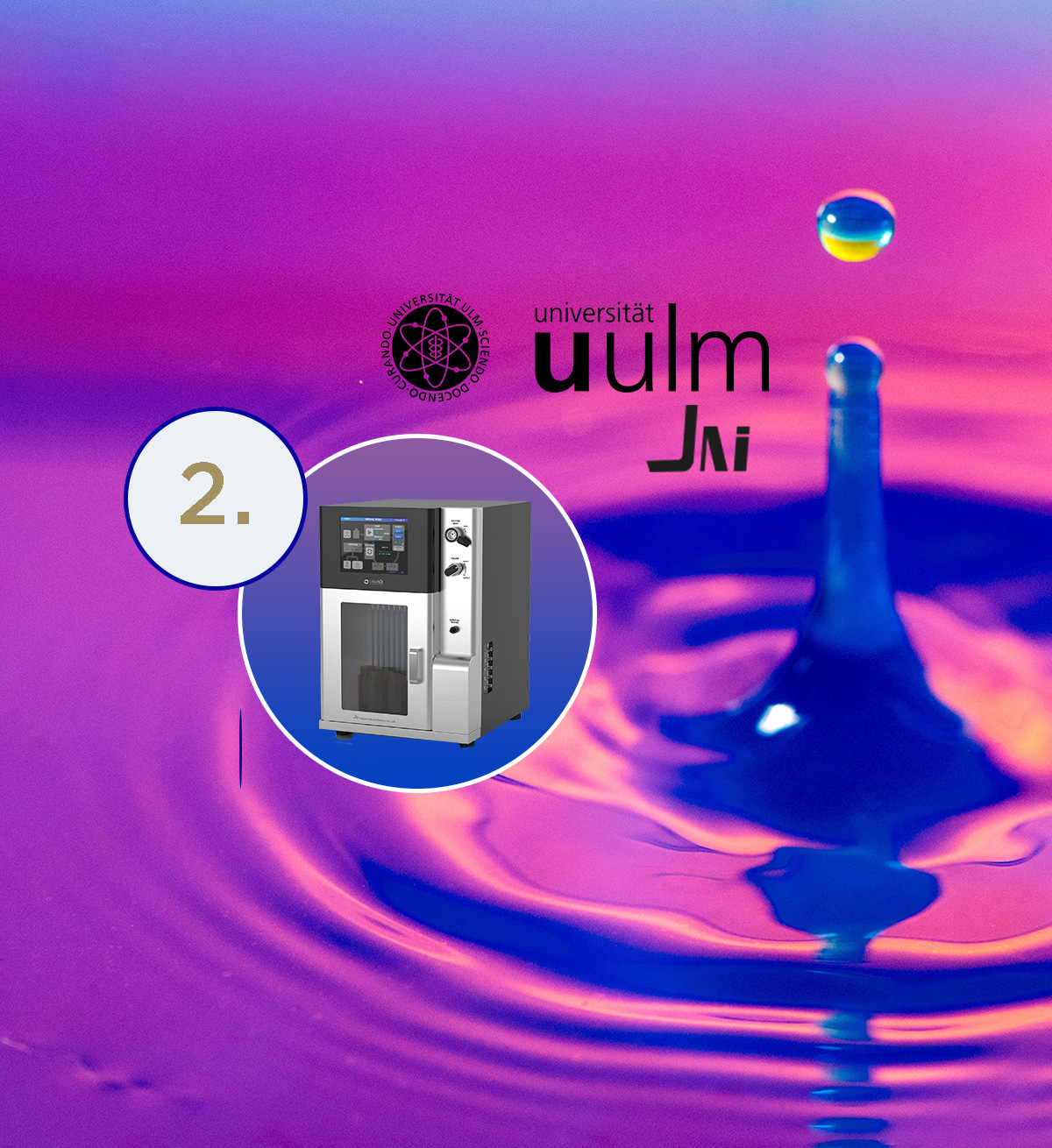
Today, 10/07/2023, we were able to install the second HPLC recycling instrument LaboACE LC-7080 Plus - AUTOMATED from our valued partner JAI (Japan Analytical Industry Co., Ltd.) at the University of Ulm.
Philipp Seitz, a scientist at the Institute of Organic Chemistry II and New Materials at the University of Ulm, needs this instrument for the separation of nanorings of different sizes and has already had good experiences with the preparative GPC method and the same instrument from JAI.
Today, Mr Seitz once again explained the added value of this acquisition for the institute.
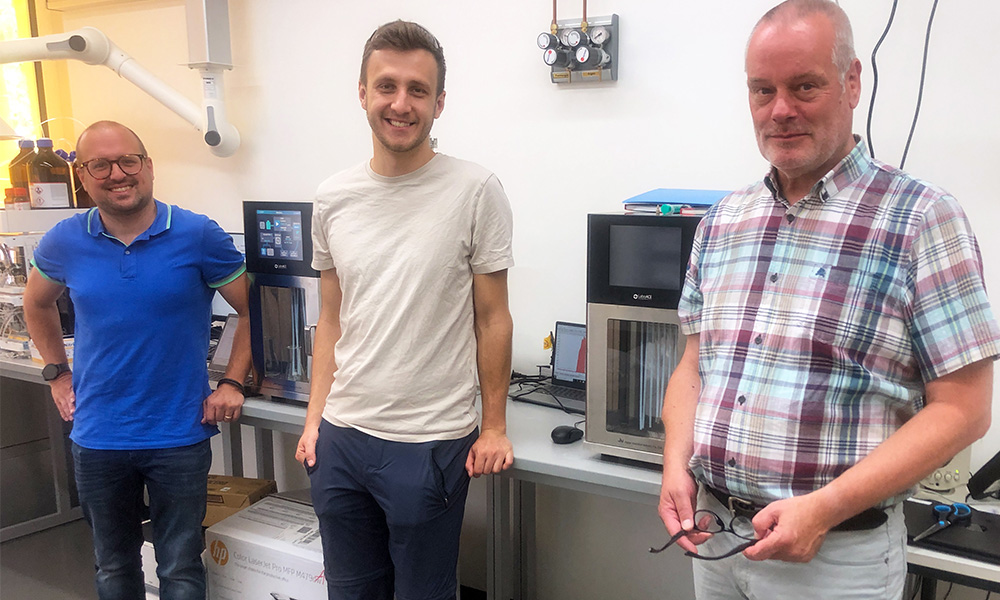
Background
Prof. Dr Birgitt Esser's group focuses on synthesising and investigating nanorings of different sizes. However, separating these different sizes is a major challenge, making preparative GPC inevitable.
The aim of basic research is the development of new materials, such as cathodes for lithium-ion batteries.
To ensure that the separation of the nanorings worked well and to find out which columns were best suited for this application, Mr Seitz sent his samples directly to JAI. After a demonstration of the process and the excellent results, it was clear that this instrument, with the recommended columns, was ideal for synthesising and studying nanorings of various sizes.
The first instrument was purchased and has been in continuous use ever since.
We reported on the first installation, including a very interesting interview with Mr Seitz. Read more...
Mr Seitz was so satisfied that he immediately ordered a second instrument for his laboratory, which was successfully installed on 10/07/2023.
Today I was able to witness the installation and was thrilled: It took less than an hour from delivery in the car park outside the institute to the first sample measurement.
The method explained by me as a layman
We have a substance with several molecules, and we want to separate them by size. We want to collect molecules of the same size in a container so that we can analyse and characterise them.
The mixture is mixed with a solvent (e.g. chloroform). Then up to 10 ml is drawn into a syringe and injected into the instrument. If the amount of mixture is larger, the automatic injection option can be used. In this case, the instrument draws the substance directly from a container.
The separation principle works based on molecular mass. Heavy molecules whiz through the tubes faster, while lighter molecules hit the edges of the tubes more often and therefore march through the tubes more slowly. In this way, molecules with different masses can be separated.
It takes about 15 minutes to pass through one column, and about 30 minutes to pass through two columns. The more often these passes take place, the cleaner the separation.
The injection site is then rinsed with the same solvent to remove impurities.
A sample is supplied by the manufacturer for use as a reference sample after installation.
(Written by Monika Martin, PHI GmbH, Marketing & Communications)
